
Sennheiser Neumann Rode Shotgun Mic Test
Thursday, April 5th, 2012 | by Randy Coppinger
Highly directional mic patterns do a pretty good job of capturing on-axis sources while minimizing off-axis sounds. Or to put it less technically: they hear more of what you point them at. Some smart guys figured out that they could put a mic element inside a tube and cut slots on the sides to further kill off-axis sounds, using phase cancellation. Known as an “Interference Tube,” this design makes a mic look kind of like a firearm, hence the name “shotgun.”
[Read more about How a Shotgun Mic Works on Randy’s website. –Ed.]
These highly-directional mikes are often used for location recording. Neumann says of their KMR 81i shotgun: “Typical applications are film and video recordings, where the microphone should not appear in the picture.” Several other mic companies make shotguns too. I wanted to know how they compared — inspiration to investigate.
I had the following mikes at my disposal: Sennheiser 416, Sennheiser 415, Rode NTG3, and Neumann KMR81i. I hung two at a time to record the same performance with both microphones. This made it easier to hear sonic differences rather than performance differences. It seemed to me that the 416 was the most commonly used of the group so I decided to compare each of the other mikes to it.
Recording
The signal path: GML 8304 mic pre-amplifier > 192 IO. Since the 415 is T-powered, a custom built T-power to phantom power conversion box was used for that mic only. Microphones were placed above the head pointing down at a distance of roughly 18 inches from the mouth.
Recordings were level-matched by ear in ProTools after the recording session.
I prefer to record with professional actors, but this opportunity came together on short notice so I volunteered my own voice. I’m not as consistent as people who do this for a living, so forgive the differences between sets. I gave three different reads:
- Standard – A conversational volume level.
- Intimate – A quieter read. This forces recording with more gain, which can reveal issues of noise floor and room acoustics.
- Projected – Basically shouting. Recording gain must be reduced, which can reveal issues of clipping and room acoustics.
Give a blind listen to these samples, form your own opinions, then click to identify the mikes and read on.
[Audio files are presented in pairs, with two mics recorded simultaneously. The order of reads presented below for each mic are: standard, intimate, projected. Files are 160kbps mono MP3s; find 48kHz 24-bit WAVs here.]
415 vs 416
There are several obvious differences between these two mikes. Yes, the 415 is silver and the 416 is black, but that shouldn’t be audible. The electronics are different: the 415 is T-powered and the 416 is phantom powered. If I had used a pre-amp that supported T-power we might expect a difference but add to the situation the phantom to T-power box my friend built for the 415 and we should expect to hear even more of a difference.
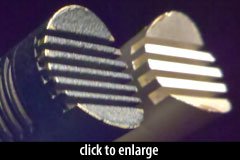 I also noticed that the entrances to the interference tubes are different. The 416 has 4 large slots while the 416 has 6 thin slots.
I also noticed that the entrances to the interference tubes are different. The 416 has 4 large slots while the 416 has 6 thin slots.
Despite the variations these microphones sound quite similar. Though there are noticeable differences, I would be comfortable using them interchangeably on the same project.
NTG3 vs 416
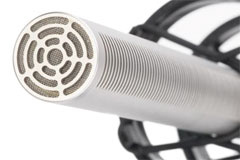 At roughly 70% the cost of a 416, the NTG3 aims to deliver similar results at a more affordable price. I was surprised how good the mic sounded. The 416 is already a fairly bright sounding microphone. To me the NTG3 goes too far trying to get the same kind of sound. The Rode seemed slightly more hyped, to the point of being strident. My voice doesn’t make a very good test for sibilance, so I’m interested to hear the NTG3 on some voices that would better reveal the issue. It was also slightly thinner sounding than the 416. The trade off — sonics for price — seems fair.
At roughly 70% the cost of a 416, the NTG3 aims to deliver similar results at a more affordable price. I was surprised how good the mic sounded. The 416 is already a fairly bright sounding microphone. To me the NTG3 goes too far trying to get the same kind of sound. The Rode seemed slightly more hyped, to the point of being strident. My voice doesn’t make a very good test for sibilance, so I’m interested to hear the NTG3 on some voices that would better reveal the issue. It was also slightly thinner sounding than the 416. The trade off — sonics for price — seems fair.
KMR 81i vs 416
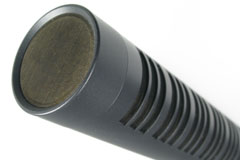 According to Neumann, the KMR81i “has been specifically designed for electronic news gathering.” Another stated design goal, and something that’s difficult to accomplish with an interference tube, is a relatively flat off-axis frequency response. But the frequency response charts on the website don’t seem to support that claim. [Like many shotgun mics, the KMR 81 i has a supercardioid pattern below 1kHz, and a lobar/clover-leaf pattern at higher frequencies, with significant narrowing of the polar response above 16kHz. –Ed.]
According to Neumann, the KMR81i “has been specifically designed for electronic news gathering.” Another stated design goal, and something that’s difficult to accomplish with an interference tube, is a relatively flat off-axis frequency response. But the frequency response charts on the website don’t seem to support that claim. [Like many shotgun mics, the KMR 81 i has a supercardioid pattern below 1kHz, and a lobar/clover-leaf pattern at higher frequencies, with significant narrowing of the polar response above 16kHz. –Ed.]
The KMR81i was warmer than the 416. We can also hear more room mode response and room noise, especially on the intimate read. This seems to be a symptom of the better low frequency response of the Neumann. Overall it sounds more realistic, more true than the other microphones. But the lack of hype is kind of boring too.
Conclusion
Rather than declaring a “winner,” I’m glad to better understand the relative strengths and weaknesses of each mic. It’s nice to have options.
Clearly these recordings indicate more that needs to be done. Not only should I use a professional actor next time, I also need to include some more microphones. I’d also like to test how well the microphones reject off-axis sounds by recording in reflective and noisy situations. Interference tubes are notorious for sounding “phasey” off-axis, so it would be nice to have an actor move off-axis to compare this effect from mic to mic.
Thanks to Charlie Gondak for recording me and additional encouragement/support from Dave Appelt, Charlie Campagna, Peter Zinda, Chip Beaman and Justin Langley.
Posted in Microphones, Shootouts | 8 Comments »








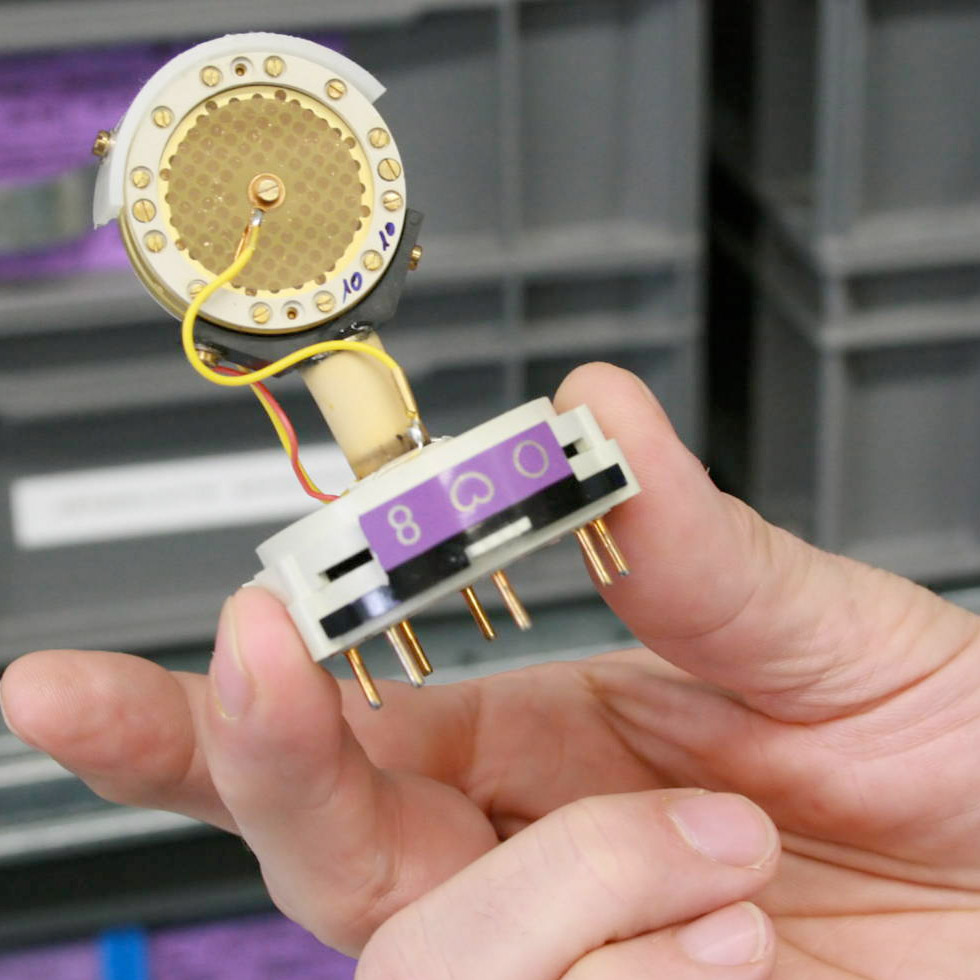
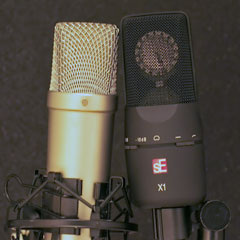

Tony Koretz
April 7th, 2012 at 1:29 am
Nice comparison test here. I was looking for comparisons on the net for the the Rode NTG-3, Sennheiser 416 and the Neumann yesterday and couldn’t find any, but then today quite by chance I discovered this test which was great.
My thoughts after listening were that any of the microphones tested would do the job pretty well, but of all of them I liked the sound of the Neumann best on the “test voice” although whether that would be the same on all voices, I don’t know.
Thanks for putting this together.
Paul
April 7th, 2012 at 3:02 am
These mics all sound pretty nice to me. The MKH416 is, to my ears, the best-sounding of the lot, but that NTG-3 is pretty slick too! I’m wondering how the NTG-2 would sound in comparison.
(In other words I’m a cheapskate and don’t want to shell out that much money for a gadget that might not be right for me.)
Awesome article.
Randy Coppinger
April 7th, 2012 at 1:34 pm
Tony, in my experience there is no single “best” mic for all voices, as you suggest. While I liked the sound of the Neumann (quite natural), it also seemed a bit more roomy under these circumstances. In a really busy mix with score and sound effects one of the Sennheisers or the Rode might cut better, so it all depends what you need the microphone to do.
Paul, I’d like to hear some lower cost shotgun microphones too.
Thanks for reading and listening.
Steve Urban
April 7th, 2012 at 11:57 pm
Very cool, Randy. Glad to see this up. This kinda confirmed my suspicions. I own the NTG-3, and while sonically it is close, for my budget it fits the bill.
One thing that’d be nice is to know the dimensions of the space you’re recording in. I’ve read that in smaller recording spaces you’re really better off avoiding the shotguns, but never really understood why. Do you have any thoughts on that?
Also, I agree that hearing how these might compare in say, a cafeteria, or a parking lot for off axis rejection would be interesting. Many thanks again for putting this up.
Randy Coppinger
April 8th, 2012 at 8:56 pm
Steve, I recorded in a reasonably sized VO booth. It wasn’t large, but is wasn’t a whisper booth either.
The issue with room dimensions could be modes. Shotgun mikes don’t reject low frequencies better than an ordinary mic with the same first order pattern [for more see http://randycoppinger.com/2012/04/05/how-a-shotgun-mic-works/%5D. Voice tends to excite small to medium sized room modes and a shotgun isn’t going to be much help with that.
Also, most shotguns use a supercardioid or hypercardioid element, so there is a rear lobe. In small rooms that rear lobe is significantly closer to a room boundary that with larger rooms. If a person is careful where s/he points the rear lobe it can be made to work, but it can be tricky. Until someone learns how to manage that rear lobe a simple cardioid may work better.
Thanks, Steve.
Steve Faul
April 12th, 2012 at 1:08 pm
Very interesting test. I’ve always wondered if there would be any real differences. First off, I could pick out the 416 every time. It’s a signature sound in VO work. I could definitely hear the 416 roll off the low end; the other mics picked up a rumble.
The NTG-3 seemed brighter to me, with the least amount of room rumble second only to the 416. Could be too much sibilance for some ears. I couldn’t recommend it for VO work, but I could see this mic becoming a real workhorse in location work or news gathering.
The 415 was a bit warmer to me compared to the 416. Less roll off. A good companion to the 416 if you needed a little more low end on a certain voice.
Ah, the KMR 81i was lovely on the soft delivery read. Nice and warm. A great choice for your voice in a nice, quiet studio with maybe a windscreen to keep the air conditioning from blowing on it and a HPF in the post. And yet, I can imagine some producers wold pick the NTG-3 for it’s brighter sound and less room rumble.
Thanks for the test.
Aria
January 24th, 2014 at 3:04 am
Thanks so much for the great post and doing the tests!
I’m doing research on microphones for a film, and had heard the NTG3 had more boost in the base as opposed to a more “natural” sound, which if you are booming actors across multiple takes and the microphone is never placed in exactly the same spot, is a problem because it wont cut together as well. I checked out the frequency response curve of the NTG3 vs the MKH 416 since it’s the “industry standard” and what people have been hearing in the base range of the NTG3 is true. It’s definitely higher. On the opposite end of the spectrum, it seems the 416 has a higher response in the very high frequencies. Keeping these things in mind I listened carefully to your Second Set test, and could easily pick out the NTG3 by the extra base in “intimate” mode. It sounded less natural. Obviously for film work, it’s best to have the most natural and flat response possible across the vocal spectrum, and leave any “boosting” for the final mix.
Florian Ardelean
October 26th, 2017 at 6:07 am
Hi!
I just read your article, because I’m thinking of getting a KMR81 myself. I hope that my critiques don’t upset you.
I own two 415T, and I worked a lot with the NTG3 and the 416. I must say I don’t agree with your testing methodology for several reasons, the main of which being – you did the test indoors, with the mic on a boom stand. These mics are made for using outdoors, on the end of a boompole.
The 415T and 416 sound very different when placed over two meters from the actor’s mouth. Your comparison leads to think that there is hardly any difference between the two.
Also, there is no room tone, you edited everything out. This is bad because there is no valid comparison of the self-nose of the mics. In conjuncture with the fact that your voice was very loud, even the intimate read didn’t allow me to listen for differences in background noise.
The fact that you used the same distance for all mics is also a minus – reach is very important. Off-axis response is very important. Handling noise as well. These are all missing from your comparison.
In my experience, the NTG3 is the least durable of the bunch – it started to crackle on its own after a while, which also happened to a NT2A mic I own. I wouldn’t buy one new, only to crap out on me after 5-6 years. It does come with a 10-year warranty but the guy I borrowed it from lost it. So now he has a mic which can only be used in dry weather. Pretty useless.
The 415T has a LOT of self-noise over 15kHz. It was designed in the 1960’s-1970’s, when the only recorders available were tape-based, which had steep roll-off in the highs, and a lot of tape hiss. So that wasn’t a problem back then. Today it is.
Also, there are many, many iterations of the 416. Electronics differ, by a lot. A 416 you buy today is a very different animal than one you could get in 2005, and even that is vert different than what you’d get in 1990. There have been many silent improvements made over the years, back before there was this craze with adding “MK1, MK2, MK14, MK500” revisions to a product, so that you could just trick your customers into upgrading for minor benefits.
Also, the 415T body is slimmer – so it does NOT fit into a standard Rycote pistol.
There is no mention of the microphones’ RF rejection – an issue that wasn’t as valid in the 1970’s, when the 415T was released – since there were no mobile phones, no WiFi devices, hardly any radio mics, well actually hardly any electronics on set – but today we live in a very different world.
In conclusion, a bit of EQ can make all the microphones you tested be virtually indistinguishable – so I fail to see the point of this test.
Please don’t be offended when I say that I was a little disappointed by your article – I think it’s a little pretentious to name this a “test” when in fact you’ve only tested these microphones’ ability to be used for voiceover, which is hardly what they were meant to do…